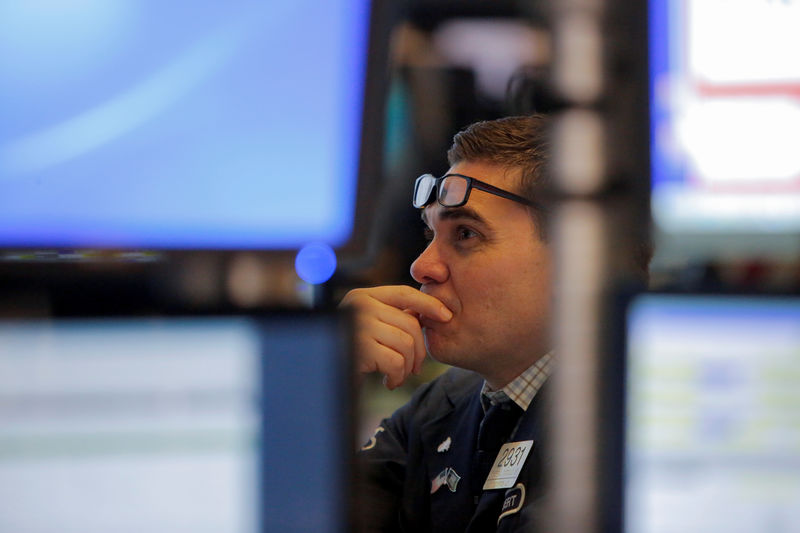Investing.com - Market watchers will be turning their attention to inflation and trade after last week’s update on monetary policy from the Federal Reserve, while earnings are set to slow down after a hectic week of tech earnings last week.
Here’s what you need to know to start your week.
1. U.S. inflation figures
Investors will be closely watching producer and consumer inflation data due on Thursday and Friday after last week’s Federal Reserve meeting saw Chair Jerome Powell play down recent weakness in U.S. inflation as "transitory”.
Powell said that policymakers don’t see a strong case for moving rates in either direction, despite public pressure from President Donald Trump to lower interest rates in order to support the economy.
The consensus forecast is for consumer prices to increase 0.4% month-on-month and 2.1% on a year-over-year basis.
So is Powell right in his view of inflation? Some recent indicators, from first-quarter growth to factory orders to productivity, have been pretty strong. The flip side is manufacturing is growing more slowly and inventories are building. The reports will help confirm whether sluggish inflation really is transient.
2. U.S.- China trade talks
Trade negotiations will again come to the fore, amid hopes for a possible resolution to the months-long conflict between the world’s two largest economies.
China’s Vice-Premier Liu He is due to arrive in Washington for talks starting on Wednesday after a round of talks last week in Beijing that Treasury Secretary Steven Mnuchin called "productive."
Mnuchin has said he hopes that by the end of this week the U.S. team is in a position to recommend a deal to Trump or tell him that one could not be reached.
U.S. Vice President Mike Pence said on Friday that the president would "stand firm" on his demands for structural changes to China's trade practices, and removal of U.S. tariffs on Chinese goods would be a part of a mechanism to enforce any deal with Beijing.
3. European data to watch
Economic reports are becoming more important than usual these days as markets try to decide whether the green shoots cropping up in some places are the real deal.
Reports on German industrial production and factory orders this week will help gauge the strength of the euro area’s largest economy after data last week showing that the bloc’s economy grew more than expected in the first quarter, rebounding from a slump in the second half of 2018.
In the U.K., a raft of data, including a look at first quarter GDP, is due on Friday after the Bank of England raised growth forecasts for 2019 after its meeting last week, but cut its inflation outlook.
The bank’s new forecasts are the first since the Brexit deadline was pushed back to October and the bank said the timing and nature of Brexit remained the biggest factor for the economic outlook.
4. Earnings reports
Earnings are set to slow this week with around 60 companies listed on the S&P 500 set to publish their quarterly reports, including Walt Disney (NYSE:DIS), TripAdvisor Inc (NASDAQ:TRIP), AIG (NYSE:AIG) and others.
Ride-hailing company Lyft (NASDAQ:LYFT) is due to release its first earnings report after the close on Tuesday, with stocks currently down around 14% since its IPO in late March. Market reaction to the earnings report could set the tone for rival Uber (NYSE:UBER) ahead of its upcoming IPO later in the week.
5. Central banks
The Reserve Bank of Australia meets on Tuesday followed a day later by the Reserve Bank of New Zealand. Both economies are dealing with low inflation, strong labor markets and limited room to cut interest rates. Both economies also have strong links with China, where growth is slowing.
The rising Aussie-kiwi exchange rate suggests investors see a greater chance of a cut in New Zealand. If the RBA, which has held policy steady for 29 meetings, cuts on Tuesday, the RBNZ would have more reason to do so.
--Reuters contributed to this report
